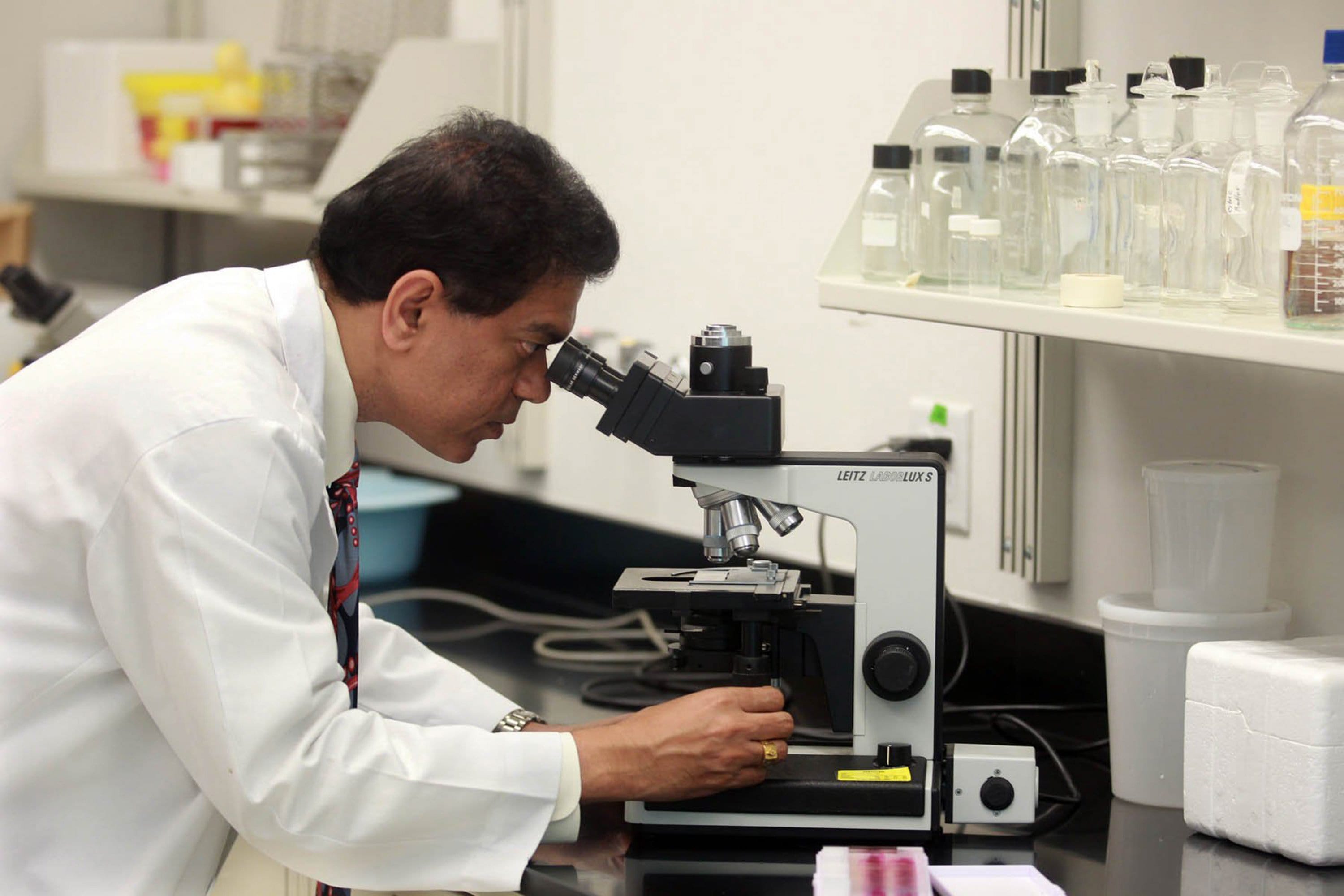MIAMI — When Bruce Daily woke up after having lumbar surgery a year ago, he realized he couldn’t move the right side of his body.
“It took me a long while to figure out I wasn’t gonna walk again,” he said. “I knew I was down.”
Daily, 69, had gone in for lumbar surgery at the University of Miami hospital and had an ischemic stroke while under anesthesia. An ischemic stroke results from an obstruction in a blood vessel that blocks the blood from getting to the brain.
Because he was unconscious, he missed the four- to five-hour window to apply the tissue plasminogen activator, or tPA, the only medication available to treat ischemic strokes. The medication dissolves the clot, restoring blood flow to the brain.
But while he missed that chance, he was right on time to meet Dr. Dileep Yavagal, a neurosurgeon who practices at the University of Miami and Jackson Memorial hospitals. Yavagal was enrolling patients in RECOVER-stroke, a clinical trial treating recent stroke patients with stem cells from their bone marrow and applying them directly into the carotid artery, one of two arteries that supply the neck and head with blood. Daily was one of 47 patients nationwide who qualified for the study.
The study is funded by Cytomedix, the company that developed the technology to extract stem cells from bone marrow. The firm chose Yavagal to lead a national blind study at the end of 2012.
Yavagal enrolled 13 patients at the University of Miami/Jackson Memorial Hospital, between the end of 2012 and January of 2014. So far, the initial three-month results have revealed that the marrow cells are not doing any damage, and there was no clear difference between those who received the cells and those who didn’t. The study’s one-year final results will be revealed in January.
“There is severe need for developing treatment for ischemic stroke, and stem cells are the most promising,” said Yavagal, whose own research is still in its initial phase, focusing on using a healthy donor’s bone marrow stem cells versus the patient’s own marrow.
Stroke, the leading cause of adult disability in the United States, and the No. 4 cause of death in the country, causes 130,000 deaths a year in the U.S., according to the Centers for Disease Control and Prevention.
Yavagal, associate professor of clinical neurology and neurosurgery and the director of interventional neurology at the University of Miami’s Miller School of Medicine, said that restricted mobility or loss of speech resulting from a moderate to severe stroke can be devastating because patients often become dependent on someone else for daily activities.
“It can really take your personhood away,” he said, adding that, besides physical therapy, there isn’t any treatment to help decrease the effects of a stroke.
Yavagal believes his study, the first stroke treatment to be delivered directly to the brain via the carotid artery, has the potential to boost blood vessels affected by stroke.
Applying the stem cells directly into the carotid artery as opposed to intravenously, in which less than 3 percent reach the brain, ensures that they don’t become entrapped in the lungs and the liver.
“The carotid artery injection is not only something that is minimally invasive, but also something that directly targets the cells to go to where we know the injury is,” he said.
He explains that stem cells secrete chemicals, called growth factors, that are able to rev up the body’s repair mechanism in the brain. They secrete anti-inflammatory chemicals and prevent the death of cells affected by the stroke, getting them back into a repair process.



